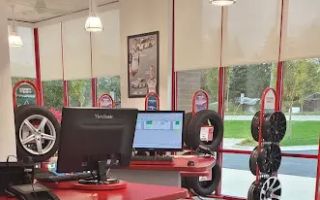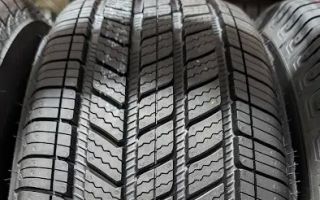How to Perform a Quick Fix on a Car Air Conditioning Leak
- 1. Understanding Car Air Conditioning Leaks
- 2. Why Car Air Conditioning Leaks Happen
- 3. Tools You’ll Need for a Quick Fix on Your Car’s AC Leak
- 4. Steps to Perform a Quick Fix on a Car Air Conditioning Leak
- 5. When to Seek Professional Help for Car AC Leaks
- 6. Real-Life Case Studies of Car AC Leaks
- 7. Maintaining Your Car’s AC to Prevent Future Leaks
Car air conditioning systems are designed to keep you comfortable, but like any mechanical system, they can encounter problems over time. One of the most common issues is an air conditioning leak. When an AC system leaks, the refrigerant used to cool the air can escape, reducing the system's ability to produce cold air. This can result in poor performance or total failure of your vehicle’s air conditioning.
Understanding how AC leaks occur and the importance of fixing them promptly is crucial to maintaining a functioning air conditioning system in your car. While it’s always recommended to consult a professional when in doubt, a quick fix for a minor leak can save you time and money.
2. Why Car Air Conditioning Leaks Happen
Car AC systems are under constant pressure, and over time, various components of the system can wear out or become damaged, leading to refrigerant leaks. Here are some of the most common reasons why AC leaks happen:
- Damaged O-rings and Seals: O-rings and seals are responsible for preventing refrigerant from escaping the system. Over time, these seals can degrade due to heat and pressure, causing leaks.
- Corrosion: The metal components in the AC system can corrode, especially in regions with high humidity or salt exposure. Corrosion can create holes in the pipes or evaporator, leading to refrigerant leaks.
- Loose or Damaged Hoses: The hoses connecting various parts of the AC system can become loose or cracked due to wear and tear, allowing refrigerant to leak out.
- Compressor Issues: The compressor is the heart of your AC system, and any issues with it can cause refrigerant leaks. If the compressor fails or is damaged, it may not properly seal, leading to leaks.
3. Tools You’ll Need for a Quick Fix on Your Car’s AC Leak
Performing a quick fix on a car AC leak requires a few essential tools. While you may need to call a professional for a complete repair, having the right tools on hand can help you patch up a minor leak temporarily until you can get your car to a mechanic. Here are some tools you’ll need:
- Leak Detection Dye: This dye can be added to the refrigerant and will glow under UV light, allowing you to see exactly where the leak is coming from.
- AC Sealant: AC sealants are available in aerosol cans and are designed to temporarily seal small leaks in hoses, O-rings, and connections.
- R134a Refrigerant: If you’ve lost refrigerant due to the leak, you’ll need to refill it. R134a is the most common refrigerant used in modern car AC systems.
- Wrench or Socket Set: You’ll need a wrench or socket set to tighten loose connections or replace parts like the hoses and fittings.
- UV Flashlight: A UV flashlight is necessary to detect the location of the leak if you’ve used leak detection dye in the system.
4. Steps to Perform a Quick Fix on a Car Air Conditioning Leak
Once you have all the necessary tools, follow these steps to perform a quick fix on your car’s AC leak:
- Step 1: Locate the Leak: First, turn on your vehicle’s AC system and use the UV flashlight to inspect the hoses, connections, and compressor for signs of leaks. If you added leak detection dye, the UV light will reveal where the leak is located.
- Step 2: Turn Off the AC and Depressurize the System: Before you start working on the AC system, turn off the vehicle and allow the system to depressurize. This ensures safety while making repairs.
- Step 3: Apply the Sealant: If the leak is small and located at a hose or fitting, apply an AC sealant to the affected area. Follow the instructions on the sealant can to ensure proper application.
- Step 4: Refill the Refrigerant: If necessary, use R134a refrigerant to refill your car’s AC system. Attach the refrigerant can to the service port and follow the instructions carefully to avoid overfilling.
- Step 5: Test the System: Once the sealant is applied and the refrigerant is added, turn the AC back on and check for any signs of continued leaks. If everything looks good, you’ve successfully performed a quick fix!
5. When to Seek Professional Help for Car AC Leaks
While a quick fix can help with minor leaks, it’s important to recognize when a professional is needed. Here are a few signs that indicate you should consult a mechanic or a specialized technician:
- Major Leaks: If the leak is large or in a difficult-to-reach part of the system, a professional repair is necessary.
- Persistent Problems: If the issue recurs after you’ve applied a sealant or refilled the refrigerant, there may be an underlying problem that requires a more thorough diagnosis and repair.
- Refrigerant Loss: If your car continues to lose refrigerant despite your attempts to seal the leak, it may be time for professional service.
For those dealing with significant AC issues, a mechanic will have the tools and expertise to locate the problem and make a permanent fix.
6. Real-Life Case Studies of Car AC Leaks
Take the example of Tom, who was on a road trip when he noticed that his car’s AC system had stopped cooling. After checking the system, he found a small leak in one of the hoses. Using an AC sealant and a refill of refrigerant, Tom was able to get the AC working again temporarily. “It wasn’t a permanent fix, but it helped me make it through the trip,” he said.
Another story comes from Lisa, who found herself in a parking lot during a heatwave with a malfunctioning AC. She used a UV flashlight to locate a leak in her system, applied the sealant, and refilled the refrigerant. Although it worked for a short period, she eventually took her car to a mechanic, who replaced the damaged hose for good.
These cases highlight the importance of knowing how to perform a quick fix while also recognizing when professional help is needed.
7. Maintaining Your Car’s AC to Prevent Future Leaks
To avoid future leaks and ensure your car’s AC system works efficiently, regular maintenance is key. Here are some tips to keep your AC running smoothly:
- Regular Inspections: Have your AC system inspected regularly by a professional to catch potential issues early.
- Keep the Condenser Clean: Dirt and debris can clog the condenser, reducing airflow and causing the system to overheat. Clean the condenser periodically.
- Monitor Refrigerant Levels: Low refrigerant levels can indicate a leak. Regularly check your refrigerant levels to ensure your system is running at optimal performance.
By performing regular checks and maintenance, you can help prevent AC leaks and avoid expensive repairs in the future.
OLD Keywords: how to perform a quick fix on a car air conditioning leak, car AC leak fix, car air conditioning repair, AC leak car, air conditioning troubleshooting for cars, quick fix for car AC leak
SEO Title: How to Perform a Quick Fix on a Car Air Conditioning Leak
SEO Keywords: how to perform a quick fix on a car air conditioning leak, car AC leak fix, car air conditioning repair, AC leak car, air conditioning troubleshooting for cars
SEO Description: Learn how to perform a quick fix on a car air conditioning leak and get your AC working again. Discover tips, tools, and techniques for fixing AC leaks in cars.


























